Found under the house of Paekākāriki’s former chemist Mr Bill Carson during the Covid-19 lockdown is a 1950 copy of a fortnightly community newspaper, Paekākāriki Progress. This is what a community website or newspaper (shades of Paekakariki Xpressed 2000-2010) looked like 70 years ago. With its hand-drawn masthead, typed, printed and stapled, it fulfils many of the same functions: events, a directory of services, local body politics and news from community groups.
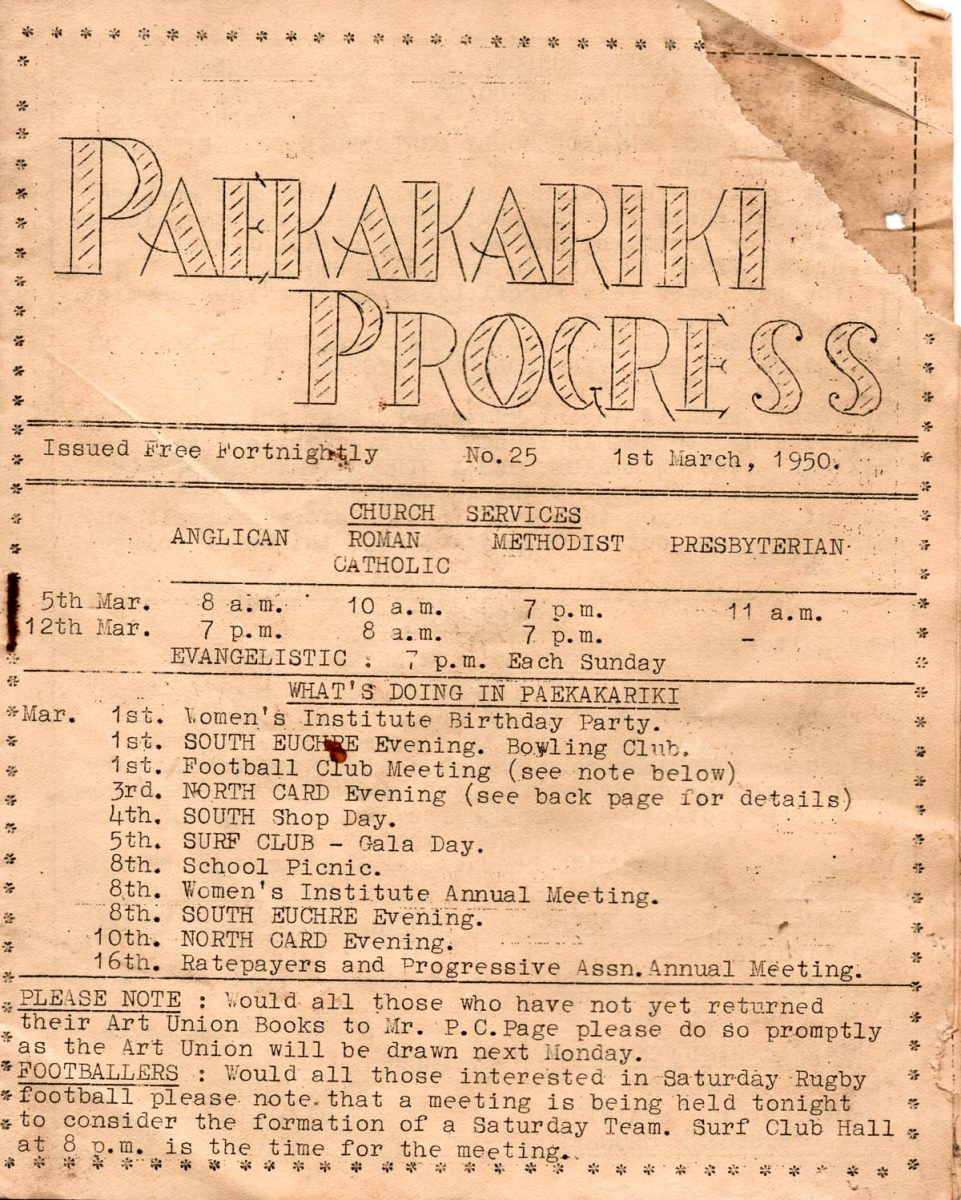
Paekākāriki Progress lasted for three years, from 1949 to 1952. 70 years is long enough ago that only a few alive may remember reading it. Here we provide a page by page scan, with a commentary and a few questions. Email us your answers.
‘What’s doing’ is an expression deserving revival. More religion was on the menu -– up to four services a day in your chosen flavour (we’re now down to just two options). And option #6 ‘Evangelistic’ marked a growing trend.
‘South’ and ‘North’ indicate that at this stage you identified as one of two tribes in the village – North at this stage only extending to the Aperahama Street subdivision, accessed via The Parade. The East quarter beyond Ocean Road was still farmland after the US Marines camp.
‘Art Union Books’: From the Te Ara Encyclopedia – “By the 1870s lotteries were expanding in size and range, and were run by the likes of sports and recreational clubs, businesses and municipal authorities. However, the word ‘lottery’ had an unwanted whiff of gambling, so the term ‘art union’ was adopted as a euphemism.”
We note football is on the rise – but the oval ball. Rugby was to stay with us until the end of the century, now usurped in the village by the round ball version.
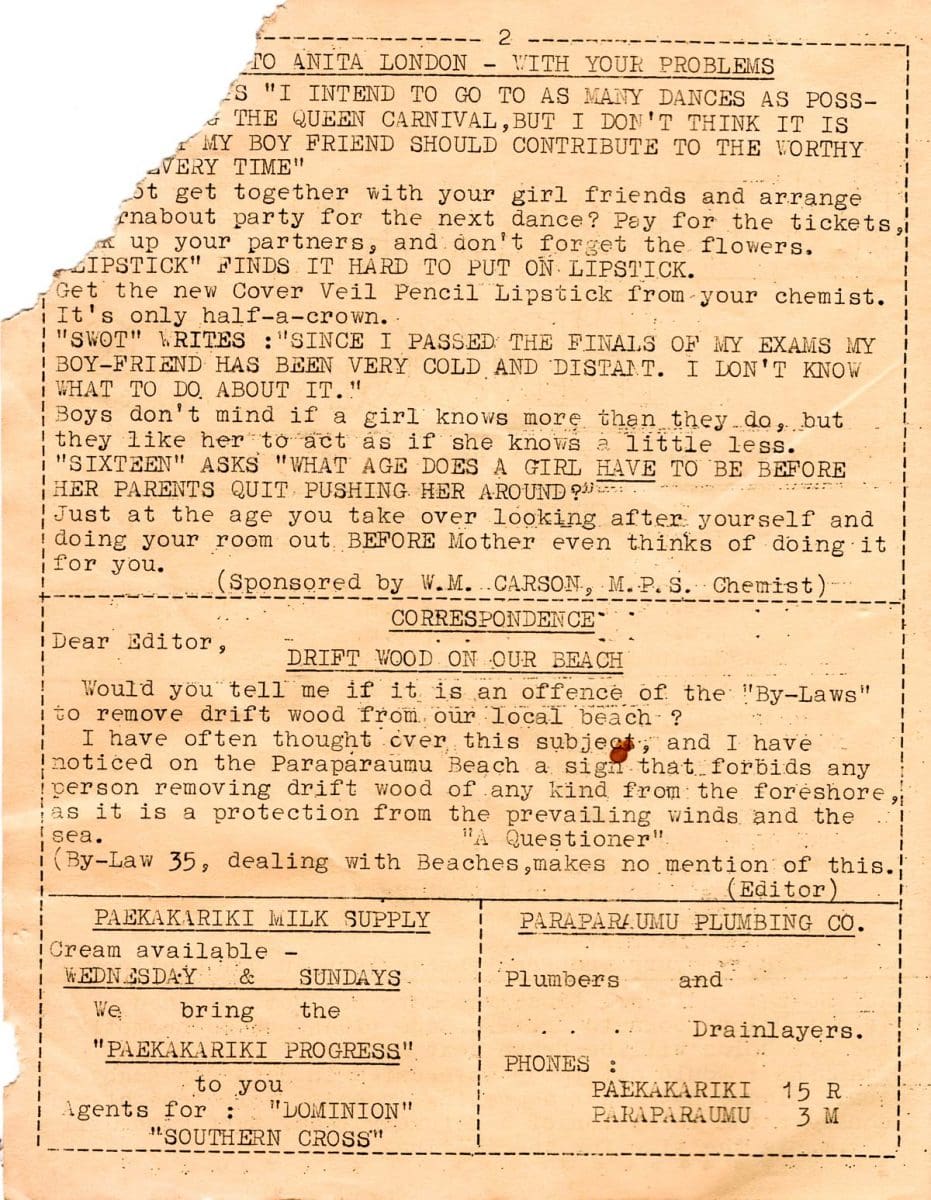
Mr Carson the chemist is already sneaking ads into an advice column. Note to teenagers: the final piece of advice still carries today.
Correspondence: a precursor of a simple Paekākāriki Tauhokohoko query –- the answer today is that strictly taken bylaws forbid removal of driftwood that exceeds what can be carried on foot.
Note the plumber’s phone numbers: 15 R and 3 M. What do the letters indicate?
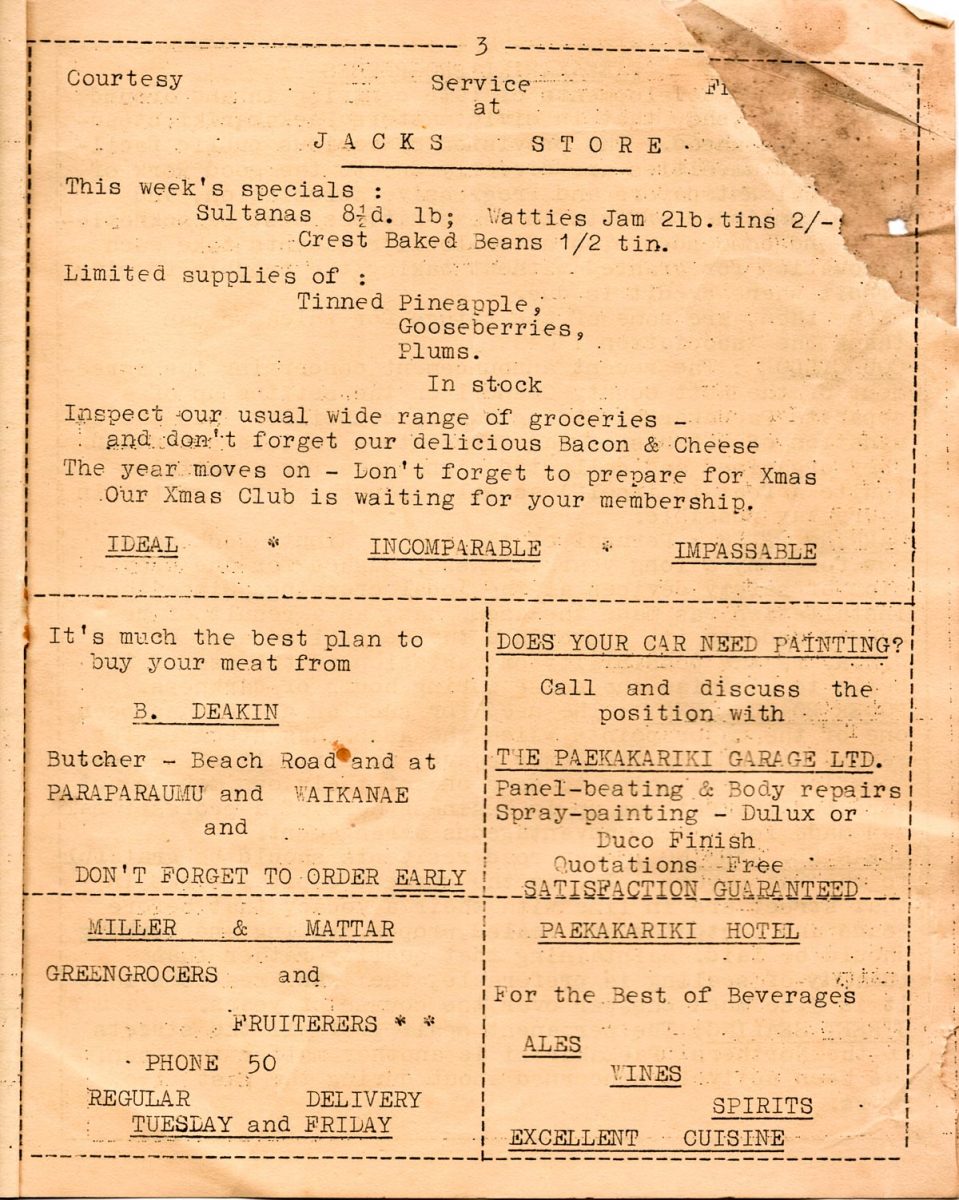
We believe The Paekākāriki Garage Ltd to be the forerunner of the recently closed Paekākāriki Auto Services. Gooseberries meanwhile were in limited supply: ideal, incomparable and impassable.
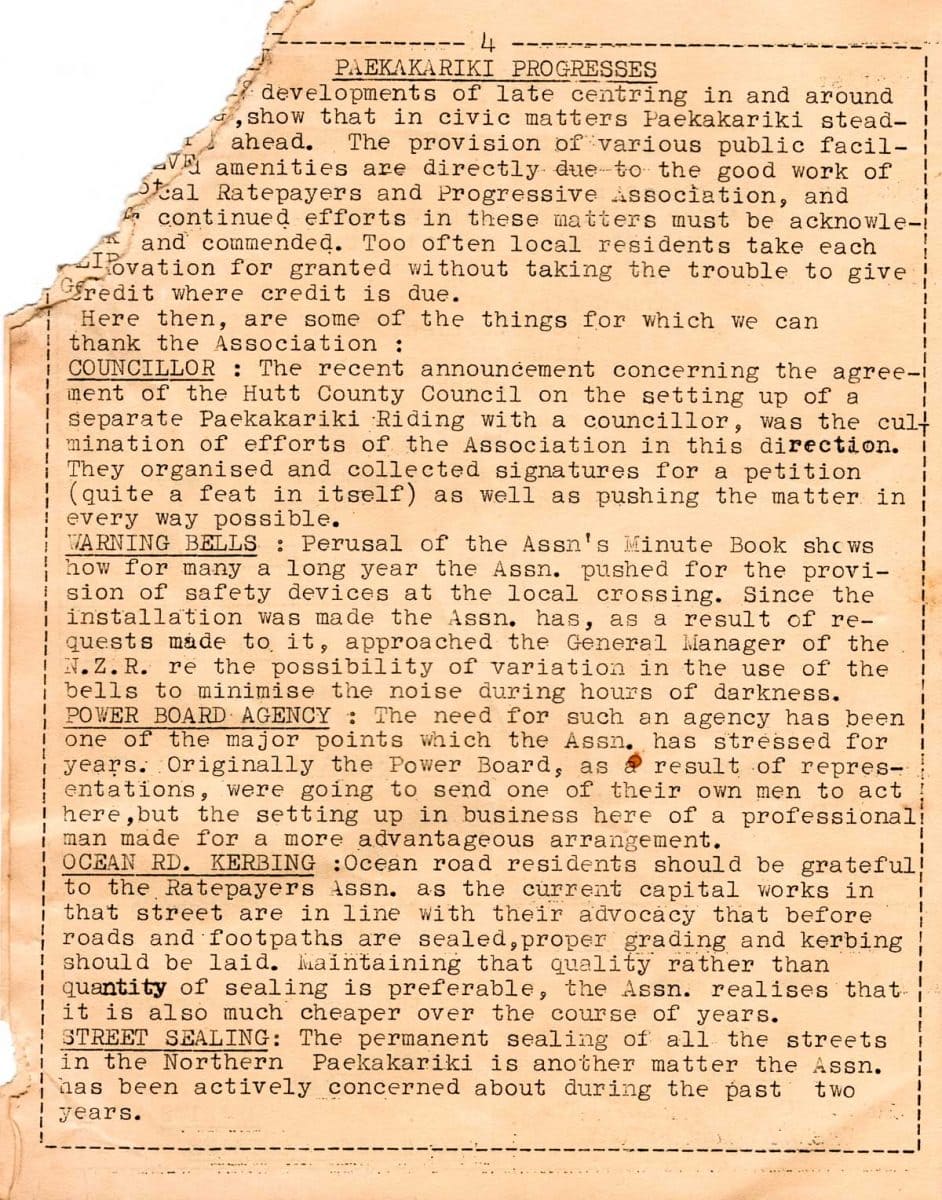
The Ratepayers and Progressive Association is to my mind a far better title than a Community Board. At this time Paekākāriki was part of the Hutt County Council.
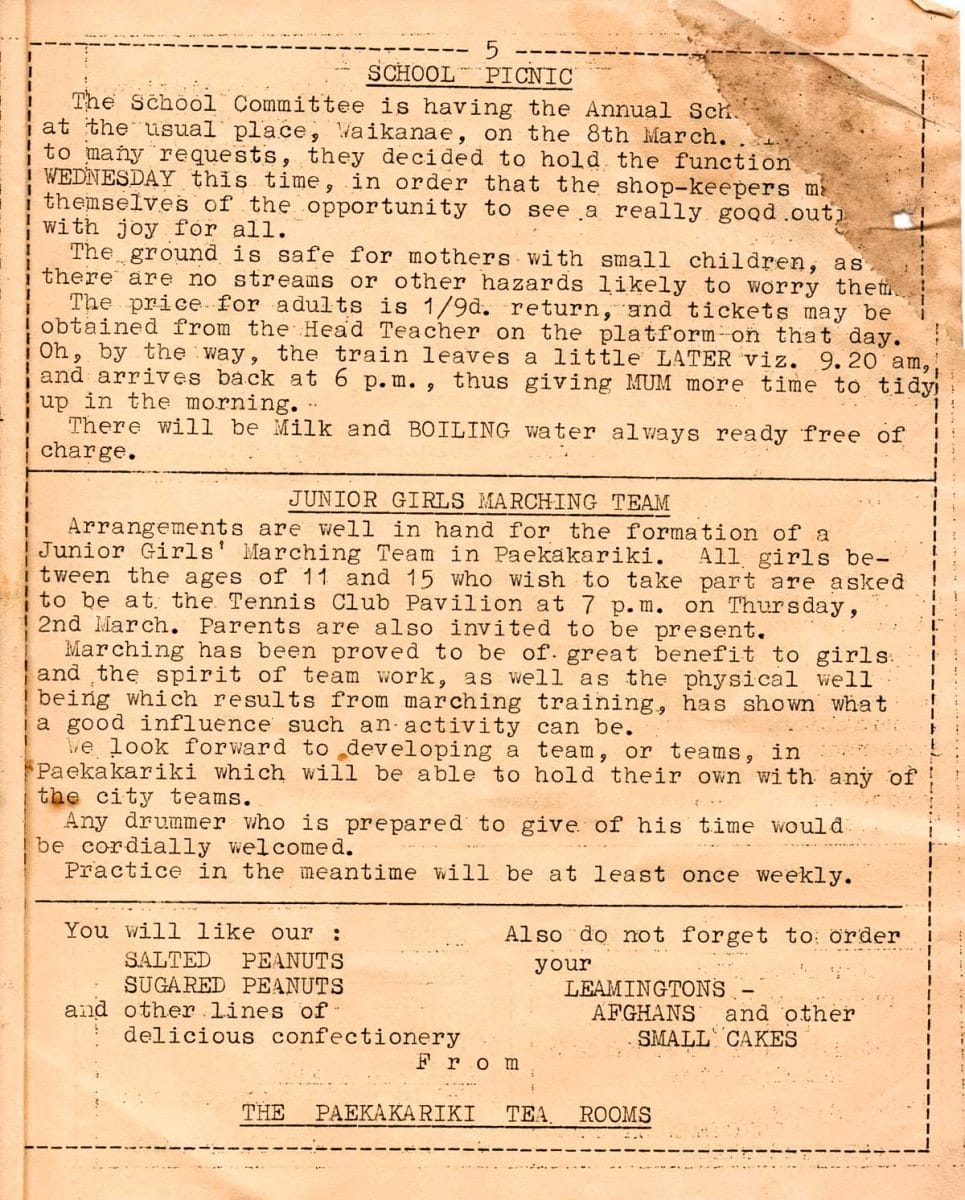
The school picnic in Waikanae seems rather a big deal, and note the provisions for ‘mum’ to get the tidying done and the clearance of all hazards.
A marching team! Sugared peanuts! The Paekākāriki Tea Rooms were in the railway station.
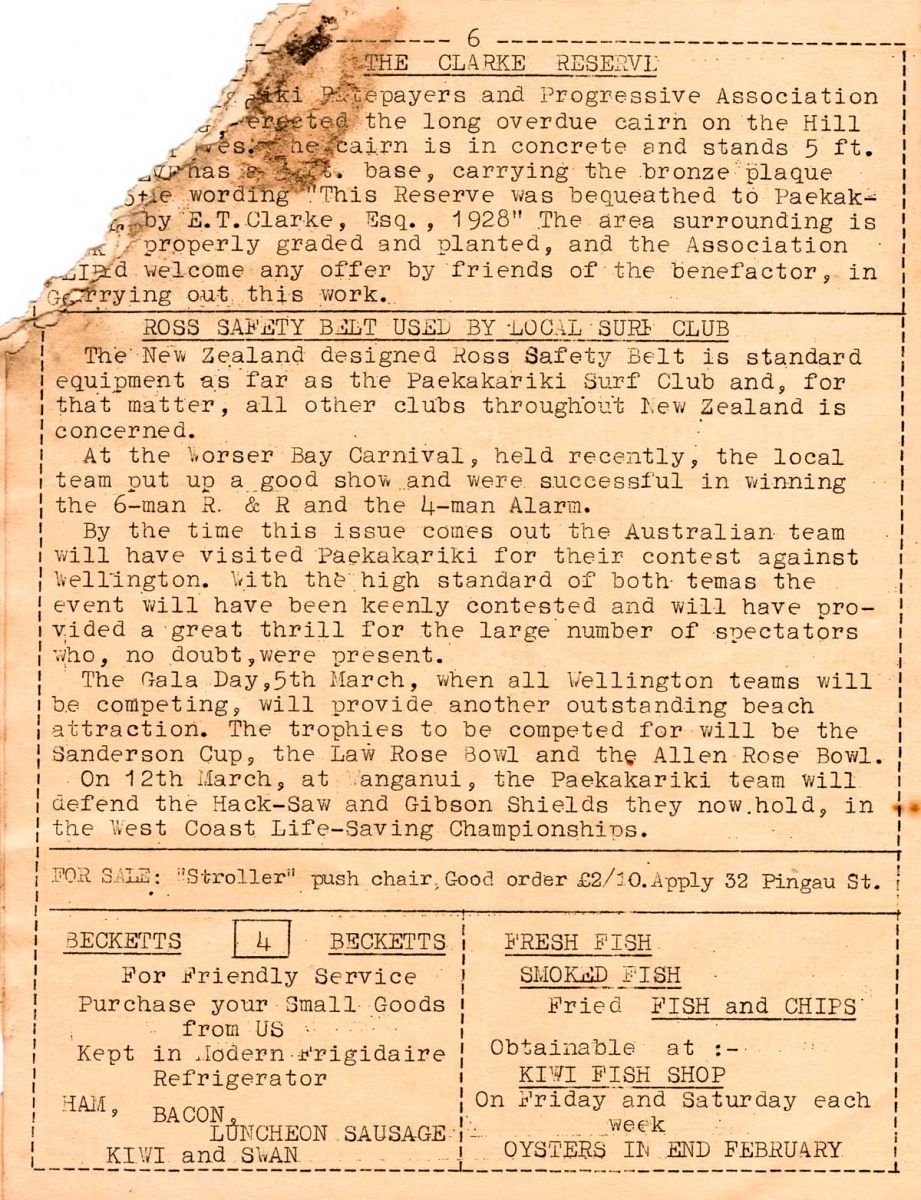
The A.T Clarke Memorial Reserve is an area donated by said Mr Clarke up Paekākāriki Hill, near what now has the Kohekohe Loop Track (where there is a big loop in the hill road). Here is a geocache photograph from 2012 of the monument. Is it still standing?
Could we live in a village where oysters are once again available?
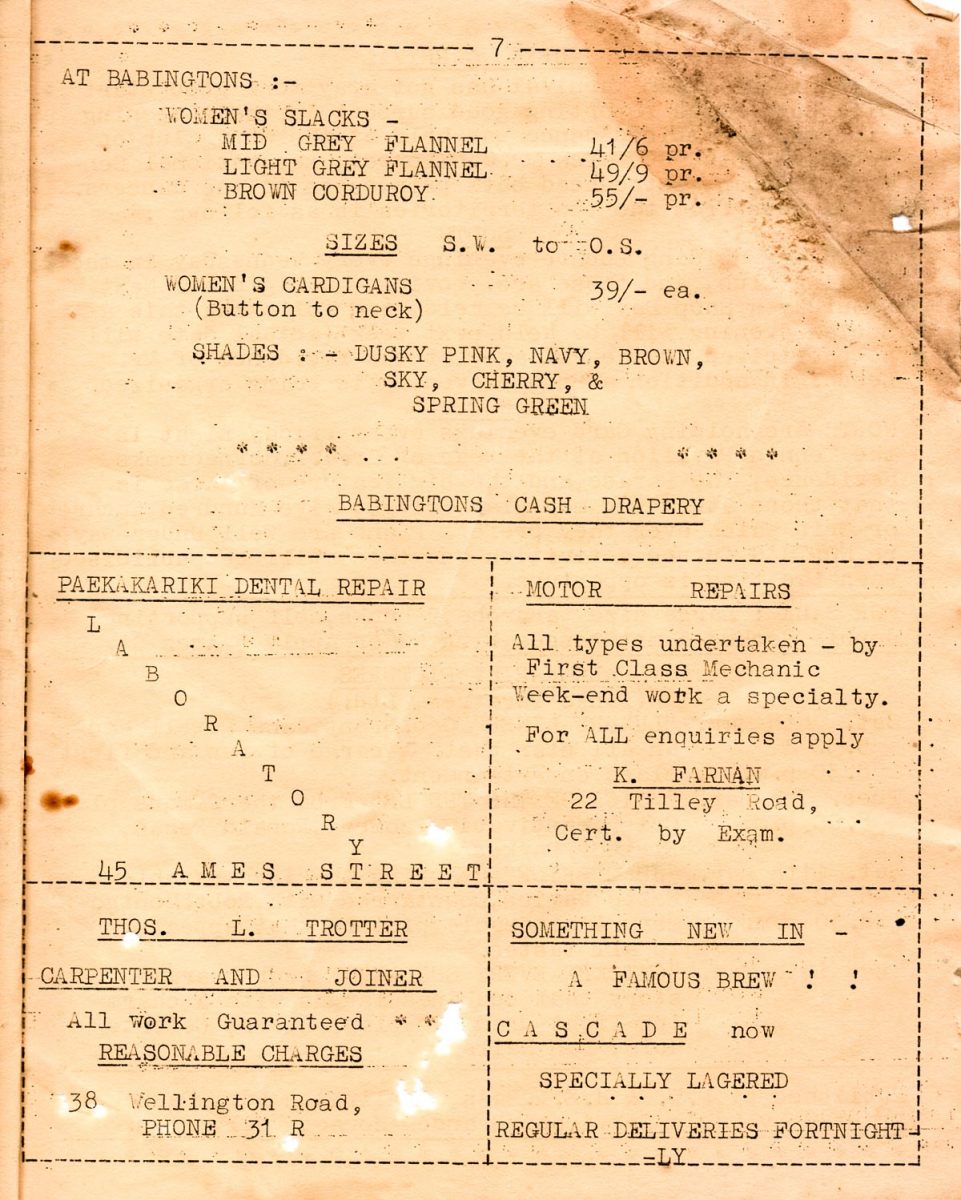
‘Specially lagered’ is not an expression you hear from today’s craft-brewers. And it seems a very different time when you could go to a Dental Repair laboratory at 45 Ames Street. I’ll have a Dusky Pink Cardy, thanks.
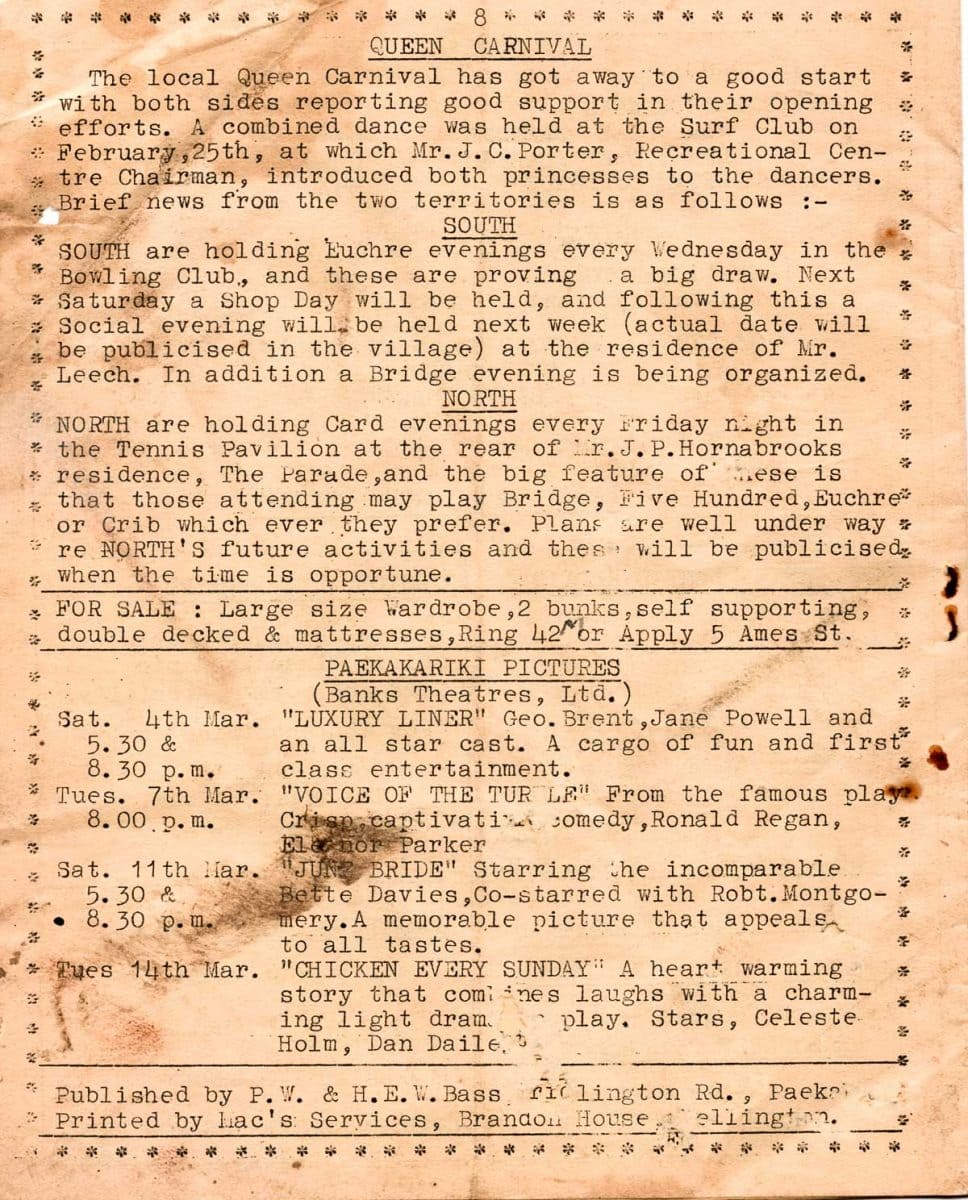
Here we see the North and South tribal social activities delineated. Bring back the cards nights I say! The tennis pavilion on The Parade was indeed a tennis court, at the north end of the village.
Paekākāriki Pictures was based at St Peter’s and you can see at this stage extended to six screenings a week. And yes kids, Ronald Reagan – a President of the United States – was once a Hollywood star. Back in the 1980s we thought the US had it bad, now look at them.
Copies of the Paekakariki Progress are held today at the National Library.
Commentary: Mark Amery. Scans: Mark Coote.
Update: your memories
After publishing this story, some of you responded with answers to our questions. Thanks! We include your memories below.
Joan Hilder
We had party lines for the telephone which meant several households all on the same line. To distinguish each household, the number was followed by a letter — which usually seemed to be R, M, D or K. I recall ours was 270K. Each letter was a morse code ring, so long-short-long was K and we knew the call was for us! Was not good form to answer the wrong call or listen in to your neighbours conversations.
Bride Coe
There have been various iterations of newsletters over the years. I think Dennis Glover produced something along this line, as did another Ames st resident in the 70s, Adrian Webster had an online version, and of course Don Polly’s version.
The phrase ‘what’s doing’ sounds very American, most likely a legacy from the marines.
The comment in the advice column sadly has fundamentally not changed ” Boys don’t mind if girls know more than they do, but like her to act as if she knows a little less”.
The comment that Bill Carson is ‘sneaking’ ads in, is rather disingenuous. It infers something underhand is going on, rather than sponsoring the newsletter like all the other advertisers. Anyone who knew Bill Carson, knew he was the last person to try and make a sneaky buck. More often than not he would talk you out of buying over the counter remedies, with the advice that to steam your head over a bowl of hot water would have a better effect. This advice often also relates to the, now, much overused antibiotics. He was generally right with his down to earth advice.
These were the days when condoms and ‘sanitary’ products were under the counter and had to be asked for. No supermarket supplies or choices then, and condoms only sold to people 16 and over. Highly unlikely a female would try buying them…. her ‘reputation’ would have been in tatters.
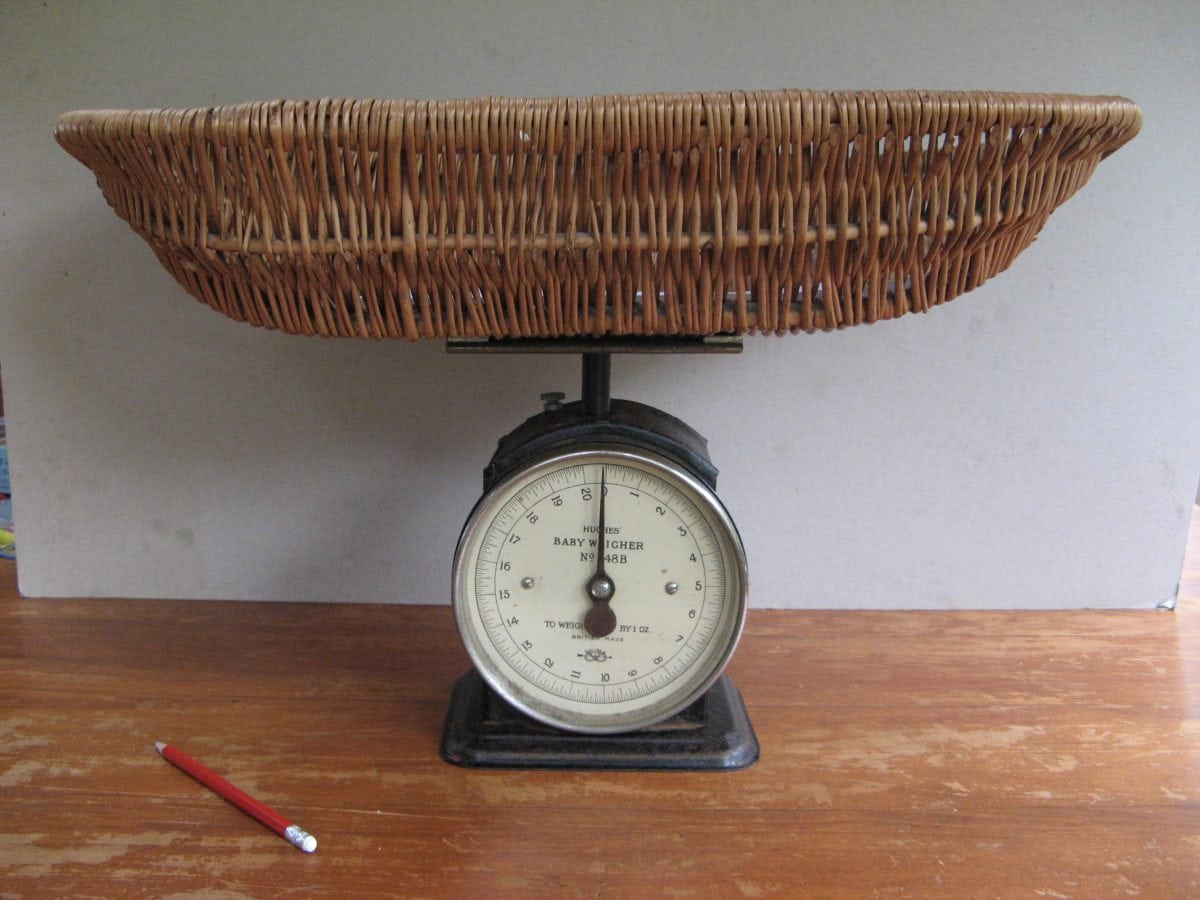
People took their babies down to be weighed in the wickerwork scales on top of the counter. There was a very small space to serve customers the rest was chokka full of everything imaginable. I’ve never seen such a densely packed shop.
He was the only chemist in a wide area and prescriptions were made up and given to the guards on the train (and I guess bus) to take north or south. At the end of the day he got on his old bike and cycled home, slowly, to 9 Tilley Rd.
The Doctor’s surgery at that time was in the building next to the veg shop. The doctor lived in Pukerua Bay.
Phone numbers. If one had a phone, then it was on a party line. That is, you may be talking on the phone and someone else in the ‘party’ could pick up the receiver to make a call and hear you speaking… hopefully not about them! To make a call one would have dialed the switchboard in the post office in the village [ the orange building] and they would put the call through to the requested number, if not already in use by someone else in the party. Apart from the telephone switchboard the post office also had banking (Postbank) and received all telegrams, so staff knew what was going on in people’s lives!
Jack’s store was presumably Jack Dive’s in Beach Rd?? The other main store was Owsley’s opposite the rail carpark.
The Ratepayers and Progressive Association was no doubt an independent volunteer resident’s association, unlike the current Community Boards who are paid by, and therefore linked to, Council.
Clarke memorial. Graeme Carlsen did a great job of keeping it neat and tidy around this cairn, as he did with many other things in the village. The memorial sits on the edge of the Clarke Reserve. Land donated by Clarke, that now encompasses the kohekohe loop.
As for oysters…it’s not that long since Salty Towers closed!
Village Dance. JC Porter [Jack] was John Porter’s father. They lived at 32 Ames St….it is said that the landscape painter Barraud used to live there once, the large upstairs room ideal for a painter. Jack ran the milkbar, where the Deli now is, at one time. (The milkbar was popular with the young marines prior to that.) The Surf Club, where the dance mentioned was held, was of course what is now the Memorial Hall. Jack was instrumental in getting the existing surf club built I believe, and the old one renamed Memorial hall. The memorial plaque had been in St Peter’s Hall.
Card nights were always a Paekākāriki thing. People would come from Wellington for a card weekend, some big houses having baches/sleepouts especially for guests from the city. Paekākāriki was the end of the electrified train line and had the biggest selection of shopping outlets from Porirua to Levin, though I guess Ōtaki township near the beach was similar.
There was no Coastlands, just fields; no Waikanae or North City malls. We were ‘it’ with grocery stores, pub, drapers, butcher, doctor, chemist, TAB, veg shop, dairies, milkbar, post office, railway tearooms, garage. Also vans that picked up dry cleaning, and more that I have forgotten. Very, very few people had cars, so shopping was local.
Going to the movies at St Peters Village Hall was the real deal. Proper fixed movie theatre seating with flip up seats making it easier to ‘stand for the queen’. God save the queen was played before every screening, and God save those who didn’t stand!
It cost (in the late 50’s) 1/6 [one shilling and six pence] in the afternoon, about 15cents…but remember people got paid very little then, and 2/6 at night. There were ‘shorts’, Movietone news and cartoons, interval (icecream from the milkbar), then the main feature film.
As for the tribalism, not a word that would have sat well in those days! Surely this still exists? Paekākāriki feels very divided at times to me.
Tennis pavilion? There was a tennis court behind 68 The Parade, where number 66 now stands. The two storey garage at 66 could possibly have been that pavilion. It is an older building than it looks.
Paekākāriki.nz is a community-built, funded and run website. All funds go to weekly running costs, with huge amounts of professional work donated behind the scenes. If you can help financially, at a time when many supporting local businesses are hurting, we have launched a donation gateway.



